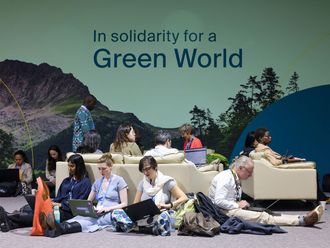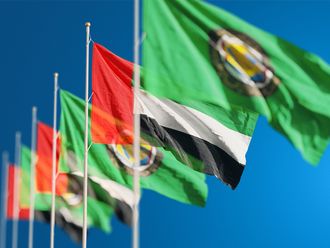
The world observes 22 March as World Water Day. This year, in 2022, the particular focus is on groundwater to explain to the world its importance. Groundwater constitutes the largest reservoir of freshwater in the world, accounting almost 97 per cent of it. Nearly 50 per cent of all drinking water, 40 per cent of irrigation water, and 35 per cent of water used for industrial purposes are drawn underground.
Despite its importance, groundwater rarely reaches the public discourse or political agenda at the national or global level. The main reason is that the groundwater, unlike the water in the rivers and lakes, is not visible, so being out of sight has helped it be out of the fight. The quantity, quality, and flows of groundwater is indiscernible to human eyes, prohibiting groundwater from getting the policy priority for its protection.
The world is witnessing a sharp reduction in the availability of freshwater resources. More than 40 per cent of the population worldwide is already suffering from water scarcity, and by 2050 an additional 2.3 billion people are expected to be living in severe water stress. A quarter of all cities in the world are experiencing severe water scarcity.
Shared river management
Historically, shared river management has become the priority of nation-states and multilateral agencies. More than half of the world’s population in 150 countries is dependent upon 310 transboundary river basins. Since 805AD, more than 3600 treaties have been made between countries to manage the water of these rivers and the last two hundred years have seen the signing of 600 of them.
Some of these agreements have also set up international river commissions and river basin organisations. There is also a 1997 UN Watercourses Convention, which has entered into force in 2014. Though only a limited number of countries are party to it, the Convention provides a general guideline on sharing and managing transboundary rivers.
Still, the available knowledge, legal regimes, and institutions the world has on sharing the water of the transboundary rivers between and among countries are increasingly facing greater challenges. Adding further to the problem of water scarcity, the global climate change-induced uncertainty over water availability has started undermining the ongoing water-sharing arrangements on transboundary rivers.
Though countries have not fought any war over water yet and have signed hundreds of agreements, there has often been apprehension and speculation of wars erupting over river water. While the focus has been in the past and continues to remain on the rivers, the management and sharing of the groundwater, which is the primary source of freshwater supply, has not become a priority.
Most extracted natural resource
Groundwater is not only the most important freshwater resource but also the most extracted natural resource on earth. One thousand cubic kilometres of groundwater are pumped out daily, and the amount is so high that it also contributes to sea-level rise.
Pulling water from the ground is commonly preferred over surface water because of its reliable supply and quality. But, when the water table drops below 15-20 meters, in most cases, it becomes economically impractical and water quality also drops.
Like surface water, groundwater also comes from shared sources. Transboundary groundwater provides critical water supplies to many countries and is fast becoming a source of conflicts. The most overstressed ones are Arabian Aquifer System, the Indus Basin Aquifer, and the Murzuk-Djado Basin.
145 countries share their groundwater bodies with neighbouring countries. There may be 592 transboundary aquifer systems globally but only six legally binding agreements and five informal sharing arrangements for these aquifer systems on record.
Emphasis on transboundary groundwater management is critical for going forward, particularly as significant groundwater declines are seen worldwide and potential serious conflict over groundwater exists.
Groundwater depletion
Groundwater depletion can even cause public unrest as in most parts of the world, it sustains many populations dependent on irrigated agriculture. Over mining of groundwater also puts the urban centers at high risk as the aquifers supplying water are expected to dry up soon. Parts of cities like Shanghai and Mexico City have been sinking.
However, transboundary groundwater sharing and management currently lack a binding international convention. The UN Watercourse Convention does not apply to aquifers that are not parts of shared river systems.
The water flow in aquifers is also much more complex than rivers to be adequately addressed by the UN Watercourse Convention. Since 2008, the International Law Commission has prepared a Draft Articles on the Law of Transboundary Aquifers, but the UN General Assembly is still discussing it.
While groundwater’s importance is often recognised in various international forums, more concerted efforts are needed at the multilateral level. Historically, groundwater has been seen as invisible and difficult to map or measure. But, the new scientific development and availability of high-resolution satellite images have changed these elements.
The global demand for freshwater is fast increasing. At the same time, over and unsustainable use of the world’s aquifers have resulted in their depletion and contamination. While there is growing insecurity over water availability due to climate change, the receding groundwater table can cause more intense conflicts between aquifer-sharing countries.
The risk for ‘groundwater wars’ can’t be overlooked if the world fails to give adequate importance to groundwater management as it deserves. Hopefully, this year’s World Water Day will help generate that awareness that the world needs to take care of its precious groundwater for its sustainable peace and development.












